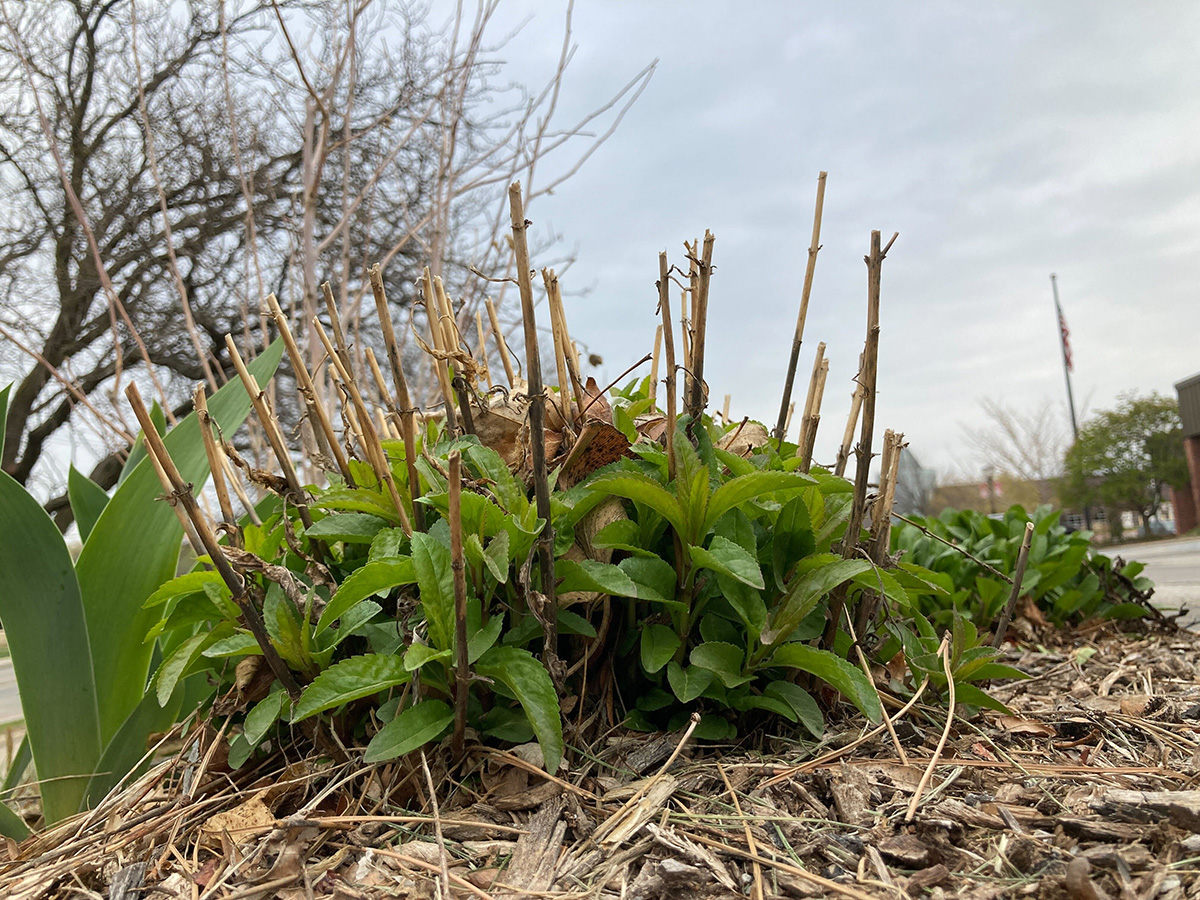
By Kait Chapman, Extension Educator in Lancaster County
Whether it be a vegetable garden or beautiful landscape, cleanup is an important component in keeping things picturesque. Cleaning up garden or landscape beds typically involves trimming back dead stems, raking leaves and removing other dead plant material and debris. While fall can be a tempting time to accomplish this, you may want to decide whether to “pester the pests” or “leave the leaves” for beneficial insects.
A CASE FOR FALL CLEAN-UP
The best justification for cleaning up the garden in the fall is to provide your landscape with some relief next year from this year’s insect pests. Just like other animals, insects find ways to survive the winter, most relying on shelter from the cold. Plant-feeding insects that overwhelm and damage plants are no exception. If you’ve been finding yourself overwhelmed with the same pesky bugs eating your plants year after year, you may be inadvertently providing a cozy place for them to shelter.
Common garden and landscape pests such as squash bugs, cucumber beetles, flea beetles, asparagus beetles, bean leaf beetles, three-lined potato beetles, cabbage looper, cabbageworm and cutworm pupae overwinter in leaf litter and other debris in and around the garden. For gardens and landscapes with a history of these pests, practicing proper garden sanitation is an important component for integrated control. Eliminating hiding spots by removing leaf litter and other vegetation in the fall will help reduce next year’s population.
A CASE FOR WAITING UNTIL SPRING
Some pest management through garden cleanup can wait until spring. Phlox bugs, for example, overwinter as eggs in the dead stems of their host plant. While it might be tempting to cut the stems down in the fall to deprive the bugs of their shelter, leaving stems intact through the winter could also provide a temporary home for beneficial insects.
Pollinators, predators and more also rely on nature for protection in the cold: bumble bee queens will use leaf litter or soil, and mason and leafcutter bees will use hollow stems. A good practice is to delay garden cleanup until temperatures reach 50°F in the spring. Instead of cutting all the way back, leave stems at least 8 inches high when trimming and bundle and set aside the cut-off shoots so next year’s bees can emerge. If you’re someone who likes their landscape tidy in the fall, consider raking and leaving a pile of leaves for valuable habitat that protects biodiversity.
FOR MORE INFORMATION
See article by Sarah Browning, “Create Good Insect Habitat in Your Spring Garden,” at https://lancaster.unl.edu/create-good-insect-habitat.